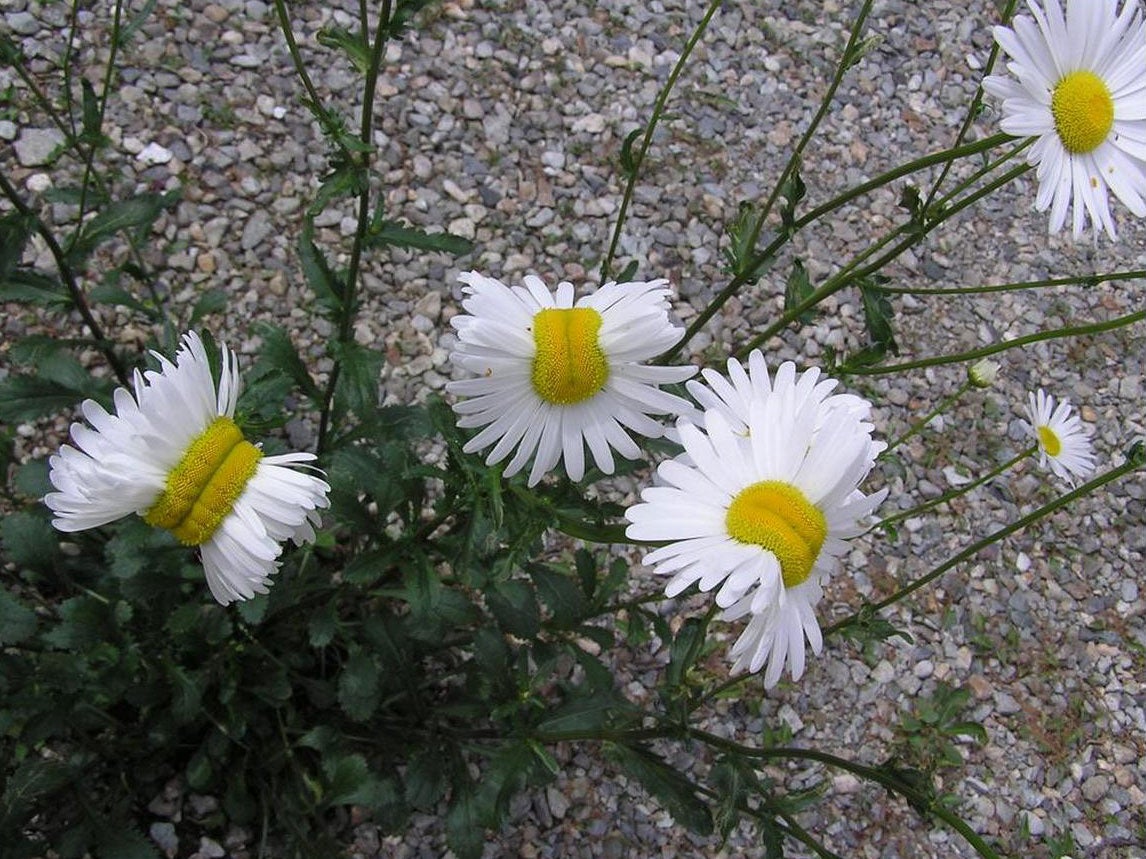Mutant daisies found near Fukushima nuclear disaster may have nothing to do with radiation
Horticultural experts believe they may have undergone 'fasciation'

The strange discovery of mutated flowers near the site of the Fukushima nuclear disaster may have nothing to do with radiation at all, experts have claimed.
Many people dismissed photos of the daisies as fake when they emerged on social media but botanical experts say there is a logical explanation for their bizarre appearance.
A Twitter user called San Kaido photographed the flowers in Nasushiobara city in May, showing them with multiple stems, conjoined centres and oddly-shaped petals.
A tweet described: “The right one grew up, split into two stems to with two flowers connected to each other, with four stems of flowers tied belt-like.
“The left one has four stems that grew up to be tied to each other and it had a ring-shaped flower.”
The radiation level near the daisies was measured at “0.5 μSv/h at 1m above the ground”, deemed slightly above normal but to be safe for habitation.
Guy Barter, the Royal Horticultural Society’s (RHS) chief horticultural advisor, said the images were consistent with a phenomenon known as “fasciation” found around the world.
He told The Independent: “It’s likely to be just random mutation - we get lots of examples of fasciation sent to the RHS every year - but, of course, it’s not possible for us to say for certain if there is a link to radiation.
“To be sure, one would have to examine the incidence in terms of numbers and area and any excess radiation present and do this over several years I suspect."
Fasciation causes an abnormal number or shape of flowers, leaves or stems and can be caused by genetic mutation, bacteria, viral infections, physical damage or radiation.
The disaster at the Fukushima I Nuclear Power Plant, caused by the 2011 earthquake and tsunami in Japan, was the worst since Chernobyl.
Hundreds of thousands of people fled their homes as radiation escaped into the atmosphere and water when three of its six reactors went into meltdown.
No deaths have yet been recorded as a direct result of the disaster, which was classed as a level seven “major accident” on the International Nuclear Event Scale.
Subscribe to Independent Premium to bookmark this article
Want to bookmark your favourite articles and stories to read or reference later? Start your Independent Premium subscription today.

Join our commenting forum
Join thought-provoking conversations, follow other Independent readers and see their replies